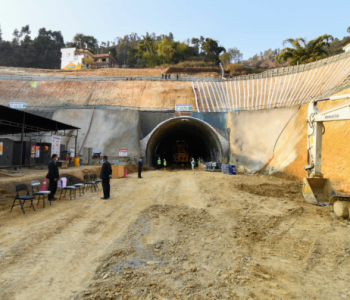Nepal expands night flight operations to 10 airports

KATHMANDU: Nepal has expanded its aviation capabilities by increasing the number of airports facilitating night flight operations to 10. This development marks a significant step forward in the country’s aviation infrastructure, enhancing connectivity and operational efficiency.
The Civil Aviation Authority of Nepal (CAAN) confirmed that Rajbiraj Airport in Saptari is the latest addition to the list of airports with night flight facilities. With this, Nepal now boasts three international airports and seven domestic airports equipped for night operations.
The three international airports facilitating night flights are Tribhuvan International Airport in Kathmandu, Gautam Buddha International Airport in Rupandehi, and Pokhara International Airport in Kaski. These airports handle a significant portion of Nepal’s international and domestic air traffic, and the availability of night operations further strengthens their capabilities.
In addition to Rajbiraj, the domestic airports offering night flight services include Biratnagar in Morang, Chandragadhi in Jhapa, Janakpur in Dhanusha, Nepalgunj in Banke, and Simara in Bara. The inclusion of night flight facilities at these locations aims to address the growing demand for air travel while ensuring operational efficiency during peak traffic hours.
Currently, Nepal operates flights at three international airports, three hub airports, and 35 domestic airports. However, despite the progress, 20 airports across the country remain non-operational, highlighting the need for further development in the aviation sector.
The CAAN has also reported significant progress in runway development. Of the 55 airports in Nepal, including three international and 52 domestic airports, 42 now have paved runways. This improvement ensures safer and more efficient operations, especially during adverse weather conditions. Among the domestic airports, 41 are categorized as small airports, underlining the challenges of managing aviation infrastructure across diverse terrains.
Nepal also has a helipad facility at Nalinchowk and plans to construct a new international airport in Nijgadh. The proposed Nijgadh International Airport is expected to enhance Nepal’s connectivity with global destinations and alleviate congestion at Tribhuvan International Airport, the country’s primary gateway.
The expansion of night flight facilities comes at a time when Nepal is focusing on boosting tourism and improving regional and international connectivity. As the country continues to recover from the impacts of the COVID-19 pandemic, the government’s efforts to enhance aviation infrastructure play a crucial role in revitalizing the economy and attracting tourists.
Experts believe that the availability of night flight operations will significantly contribute to the aviation sector’s growth. It allows airlines to optimize their schedules, reduce congestion during daylight hours, and provide greater flexibility for passengers. Moreover, it ensures better connectivity to remote areas, fostering economic opportunities and regional development.
Despite these advancements, challenges remain. The non-operational status of 20 airports highlights the need for strategic investments and policies to ensure that aviation infrastructure supports the country’s growing air travel demands. The government must address these issues to fully realize the potential of Nepal’s aviation sector and its contribution to economic growth.
The addition of night flight capabilities to Rajbiraj Airport is a promising milestone, signaling Nepal’s commitment to modernizing its aviation infrastructure and enhancing its role as a regional hub for air travel.













Facebook Comment